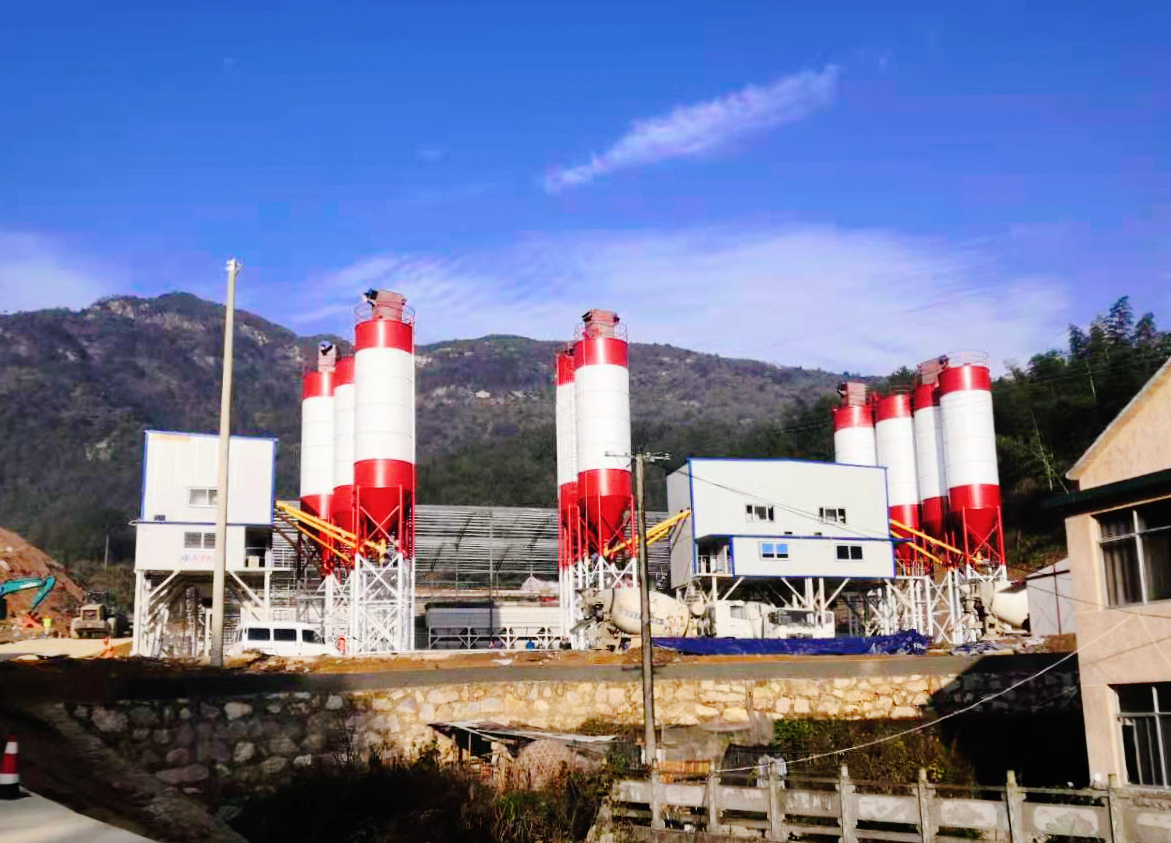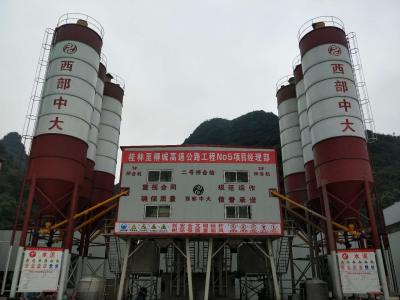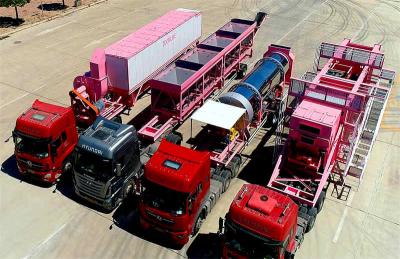How to Select Concrete Mixing Plant
1.Overall selection Principle
(1)Production scale
The production capacity of concrete mixing plant is judged according to the size of production scale. If the annual output is less than 200,000m3, the productivity of concrete mixing plant is generally not less than 90m3/h; if the annual output is 200,000-300,000m3, the productivity of concrete mixing plant is generally 120m3/h; if the annual output is more than 300,000m3, the productivity of concrete mixing plant is generally 150 m3/h or 200m3/h.
(2) Construction Site
According to the size of the construction site, concrete mixing building or concrete mixing plant can be selected. If you choose concrete mixing building, the aggregate will be lifted at one time, the productivity of the mixer with the same capacity is higher than that of the mixing plant, the overall shape is neat and beautiful, the site covers an area of a small area, and the production environment is good, but the manufacturing and installation period is long and the one-time investment cost is high. Concrete mixing plant is chosen, the aggregate needs to be lifted twice, the arrangement is flexible, the manufacturing and installation period is short, the one-time investment cost is low, but the material yard covers a large area and the production environment is poor.
(3) Supporting Equipment
Select the specification and working size of concrete mixer according to the situation of supporting equipment. The loading capacity of the mixer truck should be matched with the discharge capacity of the mixer, and improper matching will affect the working efficiency. The loading capacity of the loader should match with the loading height of the concrete mixing plant batching plant.
(4) Management Function
If intensive network management is adopted, the network management function of concrete mixing equipment should be considered to avoid difficulties in future upgrading.
(5) Equipment Technical Performance
It is mainly considered from the aspects of advancement, reliability, excellence and versatility of the equipment. The equipment should have the characteristics of advanced working principle, high degree of automation, powerful management and good environmental performance. The equipment should have excellent configuration, reliable control, strong applicability and good maintainability. In addition, high metering accuracy, good mixing quality, high production efficiency, low energy consumption, high use of standard parts, and good interchangeability should be considered.
(6) Supplier Reputation
Mainly including whether the installation and commissioning is strict; whether the technical guidance and training is in place; whether the after-sales service is timely; whether the supply of spare parts is sufficient.
(7) Performance-price Ratio
The comprehensive pursuit of equipment technical performance is not wise, will increase unnecessary investment, but only the pursuit of low investment and reduce the technical performance of equipment will bring about an increase in the cost of use, such practice is also undesirable. At present, the comprehensive performance of imported equipment on the domestic market is higher, but the price is also more expensive. Domestic equipment in several domestic well-known brands, although the comprehensive performance can not be compared with imported equipment, but the key parts of the configuration is also commonly used imported components, the main work performance is not much worse than imported equipment, but the price is much lower. A more reasonable approach is to choose the right performance to price ratio.
2. Key Components Selection Principles
(1) The mixer of commercial concrete mixing equipment
Forced mixer mixing quality, overload capacity, discharge without segregation, high production efficiency, can adapt to a variety of performance of concrete mixing, commercial concrete mixing equipment is generally used in forced mixer. However, its structure is more complicated and the cost of use is higher. Forced mixer is divided into double horizontal shaft, single horizontal shaft, single vertical shaft and planetary forms, double horizontal shaft mixer due to good mixing performance, high productivity, good adaptability, outstanding structural features, good reliability, very suitable for the production of commercial concrete; single horizontal shaft mixer and single vertical shaft mixer due to its structural features and adaptability, the application of commercial concrete mixing equipment has become less and less: planetary mixer is currently Application is also not common, mostly in imported equipment.
(2) Electric control system of commercial concrete mixing equipment
At present, the domestic concrete mixing plant electronic control system is in various forms, mainly in the following three control methods.
(1) Centralized microcomputer control: This form of control is widely used in the design of early mixing plants. The core of the control system is the programmable controller, and the higher-level computer is only used for management report printing, and the functions and roles of the computer are not very obvious. With the wide application of commercial concrete, the functional requirements of concrete mixing plant become more and more complicated, and the application of this form of control is very difficult.
② Centralized microcomputer control: This form of control concentrates the computer control and management functions in one computer, which is a heavy task, and the statistics of report information during the production process cannot be synchronized, and the statistics cannot be readily available, and there are too many human factors interfering with the measurement. For example: the preparation of the metering control program, the accuracy of the signal amplifier and A/D board card, will affect the accuracy of measurement.
⑧ Centralized double microcomputer control: this form that solves the interference of human factors in metering. The special batching control instrument is used, and the production control and management functions are divided into two computers, which do not interfere with each other, the production control and report statistics are synchronized, and the management computer can also be used as the production backup machine, which provides the network interface with the upper level computer.
3. Other Devices Selection Principles
(1)Aggregate batching system
As the silo loading is affected by auxiliary equipment and site, the volume of silo should be larger.
For the mixing plant, the volume of single silo is generally larger than 20m3, and it can be larger if belt machine is used for feeding or concrete silo, in order to reduce the floor space of stockpile. For the mixing building, the volume of single silo is generally larger than 50m3. concrete mixing plant generally by the batching station, its structure has two forms, all-steel structure batching plant using the ground batching, convenient maintenance, easy to drain, but difficult to feed, more use of loader or belt machine feeding; steel mixing structure batching plant silo for concrete structure, ground silo batching, convenient feeding, easy insulation, but difficult maintenance, can use Loader, bulldozer or dump truck directly on the material.
(2)Aggregate lifting system
Generally use belt machine and hopper elevation, belt conveyor has high productivity, reliable performance, easy to close, not easy to be affected by climate, low maintenance cost, but covers an area of large. Elevating hopper is generally only used in mixing stations, compact structure, small footprint, but high maintenance costs, poor reliability, and is now rarely used in large concrete mixing plants. At present, there are also the use of patterned belt and trough belt conveyor, the lifting angle can be greatly improved, and the trough belt can be lifted vertically, but due to its reliability and back to the material problem is not easy to solve, the general use is not much.
(3)Main mixing building
Generally, it is fully enclosed and equipped with centralized dust removal device. Cold regions should also consider the winter construction cold-proof requirements and do thermal insulation exterior. Open mixing plant and simple mixing plant, due to poor environmental performance, the current new commercial concrete mixing equipment is rarely seen, in some areas have been banned.
(4) Measuring system
At present, weight measurement is used, which is divided into two forms of cumulative measurement and independent measurement. Accumulation measurement structure is simple, easy to maintain, low loading height, but can not individually control the measurement accuracy. Independent metering alone control metering accuracy, the structure is more complex, the loading height increases, the cost has increased.
(5) Powder storage and conveying device
Powder storage tank quantity and size should be configured according to the need, generally by the material type and supply situation to decide, powder tank should be with level controller. Powder conveying device generally has the following 2 kinds: pneumatic conveying structure is simple, uniform feeding, but long distance conveying, air pressure is not easy to control; screw conveying distance is long, easy overall structure arrangement, reliable work, at present most of the mixing station or mixing building are using screw conveying.
(6) Supporting parts
The choice of supporting parts often determines the reliability of concrete mixing equipment. Generally, the supporting parts should be selected from well-known brands with high reliability, especially the main supporting parts. For domestic equipment, electronic components, sensors, cement disc valve, even the mixer reducer, lubrication components, etc. using imported components, more reliable.
In short, to buy a good set of commercial concrete mixing equipment requires comprehensive consideration of a variety of factors.




